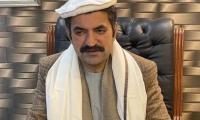ISLAMABAD: Pakistan has been specially blessed with a wide variety of abundant mineral resources which include the world’s largest deposits of copper and gold at Reko Diq, chromium, bauxite (aluminium), cobalt, uranium, lead, graphite, tungsten, coal, limestone, granite, rocksalt, marble, fireclay and iron ore.
Almost all of the above minerals are being mined either by foreign entities or in the private sector except iron ore. About 15 years ago, the department of Mines & Minerals, Government of Punjab launched a serious effort to make Pakistan self-sufficient in steel production. The Punjab Mineral Company was formed under the chairmanship of Dr Samar Mobarakmund by the government to circumvent the delays involved in normal bureaucratic procedures and to proceed with the exploration of iron ore on a fast track.
The Geological Survey of Pakistan together with the Pakistan Industrial Development Corporation (PIDC) were funded either by the government of Pakistan or by UNDP to carry out mineral survey at different locations. Usually, it takes 10 to 14 years for a mineral deposit to be discovered through surface studies, located through test drilling, accurately assessed in quantum and quality and finally a feasibility report be prepared in the form of a NI 43-101 certified bankable document be prepared to launch bidding for a steel mill or any metal refinery.
Realistically, from day one to the commissioning of a steel mill may take 14/15 years. This demands a special mind set of the government if it ever wants to exploit the mineral wealth in the country. Considering the 5 years tenures of the political governments, mining ventures would fall under the category of national projects.
In 2012, two efforts were launched by the government of Punjab through its department of Mines and Minerals to explore the potential of iron ore initially discovered through the efforts of the Geological Survey of Pakistan and PIDC in the vicinity of Chiniot and in the area close to Kalabagh. Intensive exploration was launched initially at Chiniot in 2014 by the Punjab Mineral Company (PMC). After 73,000 metres of drilling both vertical and inclined wells, the chemical analysis of about 75000 samples revealed an asset of iron ore calculated to be around 267 million tonnes.
Several teams of foreign experts who visited the site and looked at the iron ore samples extracted through the drilling called our Chiniot iron ore as an “Amazing Discovery”. Another six months should give us the NI 43-101 Report which is in the final stages of completion. It has taken PMC and its team of foreign consultants around 10 years to arrive at this stage where we can now launch the process of bidding for a mining/steel manufacturing facility at Chiniot. It is expected that Insha Allah by 2028/29, a steel mill of one million tonnes per year producing a cold rolled steel sheets shall be in operation.
Kalabagh iron ore was discovered in the 1960s. Due to the fact that this ore is low grade in iron (about 30%) and have a strong binding with silicon dioxide makes it difficult to produce pure steel from ore at an economic price. About eight to ten efforts were made by different German, French, Russian, Chinese and Pakistani companies which only succeeded in producing pig iron with unacceptable impurities. PMC sent a large consignment of Kalabagh iron ore and coal to Germany in 2014/15 where work was carried out by a consortium of companies/universities to find out the process for extracting high grade pure steel from the ore at an economic price.
By the grace of God, this latest effort yielded great success and 99.2% pure steel was produced from the ore. The plant design and pre-feasibility has also been prepared. PMC is now desirous of launching an exploration effort to determine the quantity and mineability of iron ore at Kalabagh.
With the culmination of exploration effort, the NI 43-101 Feasibility Report should be finalised. Initial exploratory drilling and resource estimation indicate that there are about 300 million tonnes of iron ore available at Makerwal, Chichalli and Kuch in the area of interest. It is hoped that Insha Allah this effort will also lead to a second one million tonne per year steel mill and in conjunction with output from Chiniot, the two mills will be able to nearly meet the total demand of import of steel in Pakistan till the end of the present century.
NA body instructs to raise awareness about drugs, child abuse, and use of social media platforms
Operation focuses on neutralising alleged threat posed by 95,471 radicalised individuals catalogued in govt database
Imran Khan’s lawyer insists that cross-examination of witness be completed by Bushra Bibi’s lawyer
Balochistan govt spox says that cabinet approved policy guidelines for trading in carbon markets
Deceased criminal was involved in murder of Sub-Inspector Ramzan and 12 other police personnel
Chairman Rai Hassan Nawaz directs officials to ensure timely arrivals and departures of trains







